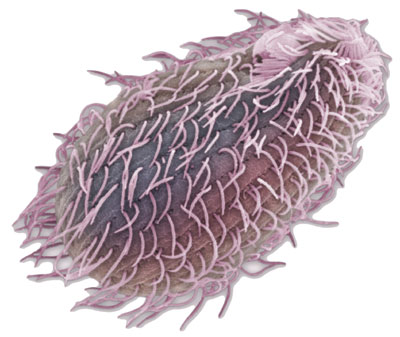New York Times Lauds Ciliates For Sexual Weirdness

Judson starts off with some ciliate facts, such as their abnormally large numbers of genes, importance in biological research, and presence in a wide variety of locations throughout the world. After that, she gets to what is likely the real reason people are reading, detailing how these microscopic protozoa get down. First comes the revelation that ciliates actually reproduce asexually, so sex and reproduction happen separately (cue “Now that must be the life!” joke). Next comes the fact that sex brings upon drastic genetic changes in participants. Judson explains:
Each ciliate has something called a micronucleus; this contains two complete versions of its genome. During sex, the micronucleus divides in such a way that each individual keeps one version of its genome for itself; it then gives an exact copy of this version to its partner. Afterwards, each individual fuses the two genomes (the one it kept and the one it got) to make a new micronucleus.
This has three odd consequences. The first is that, by the end of sex, the two individuals have become genetically identical. It’s as if you and your mate began coitus as yourselves and finished as identical twins. The second odd consequence is that, partway through its life, a ciliate can radically alter its genetic make-up; genetically speaking, the transformation is so extreme that it’s as if you changed into one of your children. Talk about being reborn.
Which brings me to the third odd consequence: after sex, the organism undergoes a profound remodeling.
Ciliates have evolved a curious system by which the micronucleus is reserved for sex: the DNA there is not involved in the day-to-day running of the cell. Instead, the job of running the cell is done by something known as the macronucleus. (After sex, the old macronucleus is destroyed, and a new one is built.)
And apparently, all this rebuilding/transformation lends itself to variety. Judson closes with:
As if that wasn’t enough strangeness, here’s one other peculiar detail. Many ciliates have more than two sexes (or “mating types”) and some — Stylonychia mytilus, for example — have as many as 100. This doesn’t mean that 100 individuals have to gather for sex to take place. Rather, it means that you can mate with anyone not of the same mating type as yourself. In principle, it gives you more choice: with more mating types, more individuals are eligible mates. In my next life . . . .
There’s really nothing left to say except that yes, she’s right – that is a lot of strangeness. Indeed, it’s fitting that such bizarre practices were once sort of chronicled by Gary Larson in a Far Side cartoon. Who knew he was depicting such deviance?
(via The New York Times)
Have a tip we should know? tips@themarysue.com